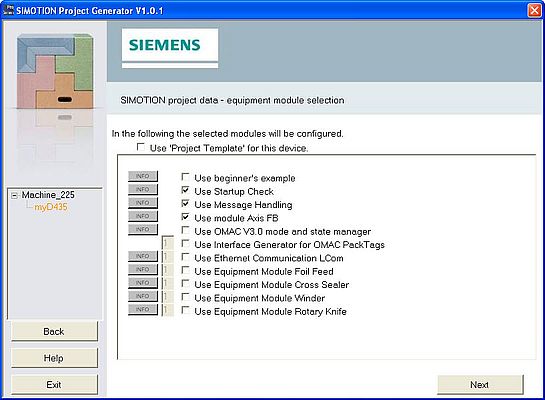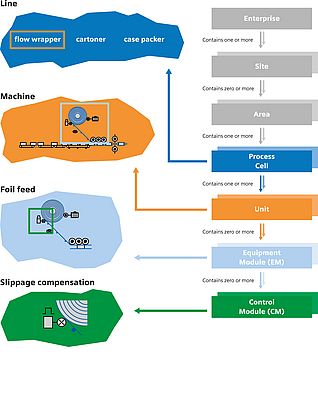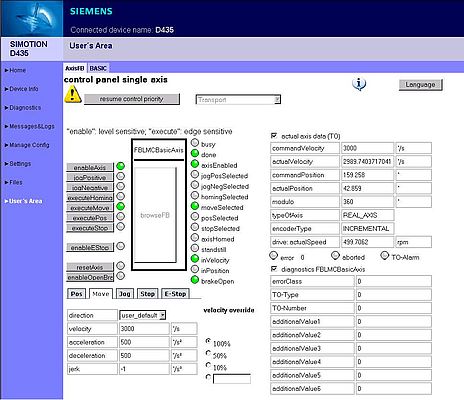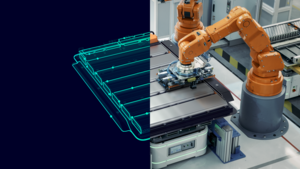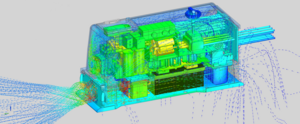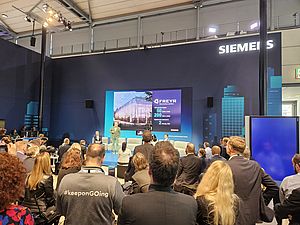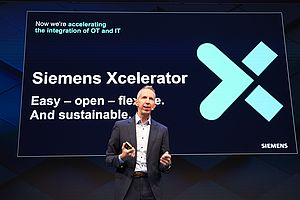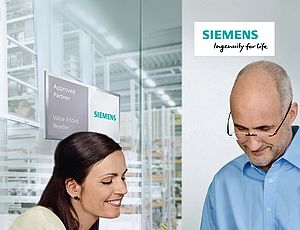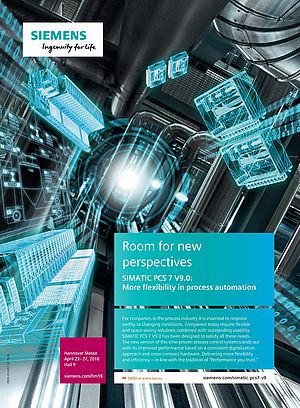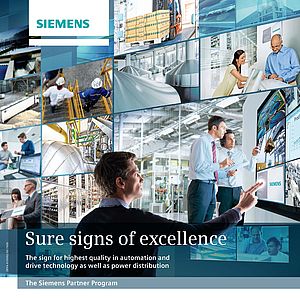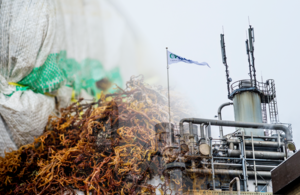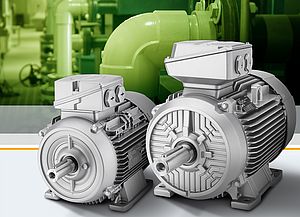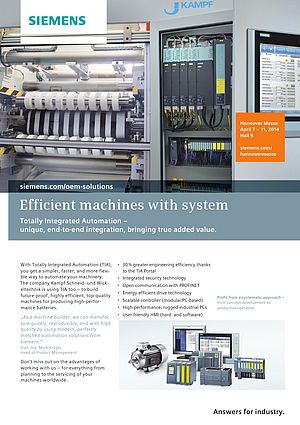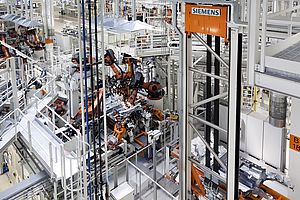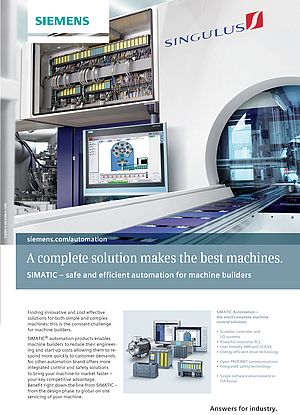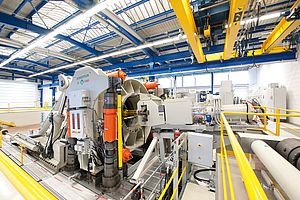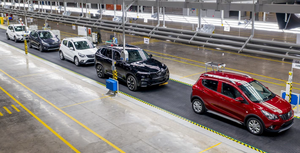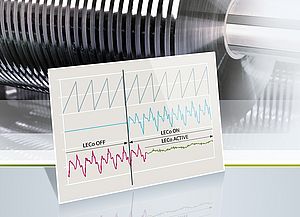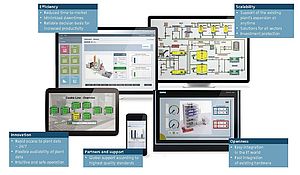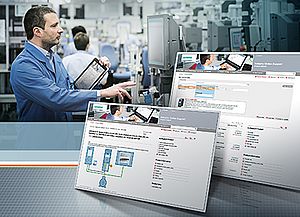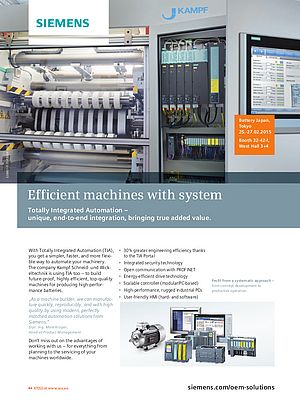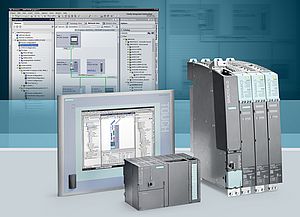The key to short development and commissioning times, and thus internationally competitive production machines, lies in an efficient engineering. A new project generator based on proven base functions as well as with technology, communication and application modules that are linked automatically to form ready-to-use and loadable motion-control projects meets just this requirement. In addition, the automatically-generated comprehensive Web diagnostic pages greatly simplify the commissioning and maintenance of production machines.
Highly-efficient production machines in conjunction with high flexibility require mechatronic machine concepts that replace mechanical components, such as gearboxes and cams, with servo drives and an intelligent motion control.
The comprehensive drive and control engineering makes it inevitable that the effort in the mechanical design has moved to the software engineering in the electrical design. This requires a changed engineering process of the complete machine development through to the service. Consequently, machine manufacturers and system integrators require more efficient engineering solutions that help save effort, time and cost. Because new products must be brought ever faster onto the market, the time-to-market factor is becoming more important, even for end users and machine operators.
The response from Siemens is to simplify the configuring of motion-control applications for the established Simotion control system by consistent standardization and modularization, to automate many parts and so accelerate the configuration process. Such a tool is the new, open project generator, Simotion easyProject. The first practical experience with the tool has shown that major time savings can be achieved while at the same time reducing the possibility of making errors. In many cases, the deployment pays for itself even for simple applications and the use of a single standardized module because time savings can be achieved during the project creation, commissioning and servicing.
The advantages of the project generator are particularly apparent for series machines, for the simple implementation of flexible machine variants with modularized components, and for single machines that are frequently based on standardized function units.
Based on proven modules
In recent years, a wide range of applications in many different industry sectors have been implemented with the Simotion motion-control system and for which various base, technology and application modules (also including so-called "equipment modules", see below) have been developed and optimized. These proven software modules, some of which have been promoted to become quasi-standards, can now be individually included very easily with the project generator in a new or existing engineering project. This is done by first selecting in simple selection screen forms the Simotion components and then the desired modules. The contained or predefined functionality can then be configured with a mouse click and finally the complete project generated.
The base functionality provided by the project generator that can be used in almost every Simotion application includes:
· A centralized error-message handling of all components, including the archiving and display on a visualization system (HMI)
· A startup test of all connected components (this provides information about the status of the configured devices on the various field buses and internal connections)
· An operating mode management in accordance with OMAC (Organization for Machine Automation and Control )
· A data interface based on OMAC (Pack Tags) or Weihenstephan · A machine-machine coupling via Ethernet communication using TCP/IP
· The simple activation of motion-control base functions (through to the cam synchronous operation) using a central (generic) axis function block
· A workflow interpreter for the simple tabular configuring of machine workflows
This base functionality alone often represents a large part of the manual, sometimes time-consuming and error-prone, programming and configuring work that is usually required.
Hierarchical structures for modular machine construction
The project generator also supports the modularization of machine functions using so-called equipment-modules that are particularly common in the packaging machine industry. The provided equipment modules include foil feed, cross sealer and winder functionality for the fast, modular design of applications such as filling plants, tubular-bag machines and, in principle, any production machines. Each equipment module can also contain one or more control modules, such as a print-mark correction, a thermostat or just a technological axis. The project generator so conforms to the specification of the international standard ISA-88 that defines exactly the module design; this permits simple and consistent machine structures.
This standardized, hierarchical structure has two major advantages:
Firstly, all components involved in the project use standardized interfaces with a uniform communication. This goes so far that a standardized machine interface that includes the command, status, administration and alarm information can be used to easily integrate different machines in a line and make all data available for a higher-level visualization and diagnosis.
Secondly, the ISA standard specifies the modularization of components. A control module (e.g. thermostat) can be used in various instances in equipment modules; an equipment module itself can be reused in different machines and production units. The software for the various modules only needs to be created once and can be selected and configured in the project generator with just a few mouse clicks. The modules can exist just as a frame object with standardized interfaces or be present fully-programmed.
Open for customized extensions
With the contained base, technology and application modules, the project generator as standard covers a wide range of applications in the production-machine area. Furthermore, the open structure of the project generator also permits industry- or customer-specific adaptations and extensions. Namely, the user can modify the automated engineering with the project generator and extend it with additional functionality and user-specific modules. In this case, the project generator provides a user interface for the configuration and parameterization of the modules; the desired (or provided) functionality of a module can be adapted easily by changing its XML description. The modules offered in the project generator so can be customized with only the actually required functions being made available, something that also helps to reduce the complexity.
Automatically to the ready-to-use project
The combination of base, technology and application modules permits a clear machine modularization using functional units. All selected modules are combined automatically and so errors precluded. During the generation of the project, all required technology objects (TOs) are created and interconnected, libraries and the selected program modules are included automatically in the project, and the programs assigned to the associated execution levels. The result is a Simotion engineering project with the desired machine functions that can be loaded and run without a single line of program code needing to be written. During the subsequent configuring, users can concentrate fully on the special functions of their machine (workflow, signal links, special functions ...). They save most of the work usually required and so reach their objective much faster.
The consistent design also makes such a generated project very easy to maintain. The user can edit and modify the generated program modules. If standard modules of the project generator are changed centrally or new standard modules need to be included in the project, this can be done easily by rerunning the project generator. The originally used, and possibly updated, modules and libraries are detected and displayed. They can then also be automatically updated in the project.
Web-based diagnosis included
The project generator also creates specific Web pages for the individual modules. If required, such modules are loaded automatically into the Simotion controller and so individually extend the diagnostic capabilities that each device makes available via the integrated Web server and the standard diagnostic pages of Simotion IT. This makes commissioning or certain service tasks also possible with a standard Web browser without requiring an engineering system. It does not matter whether the connection with the controller is made directly with a network cable or a secure connection (e.g. with VPN tunnel) via the Internet is used.
Two examples:
1. The generic "axis function block" included in the project generator contains a control panel with which most of the block functions (homing, jogging, positioning...) can be activated and diagnosed easily using a Web browser via the network.
2. The core tasks of the generic "error message handling" base module include the chronological acquisition and grouping of system, TO, drive, peripheral and user messages, and their preparation for display on an operator panel or with a Web browser.
After the generation of the project and its download to the controller, these diagnostic pages can be used immediately without requiring any additional programming work. The specific diagnostic pages are very advantageous for the initial commissioning, in particular, in fault or service situations, because, for example, fault states can be diagnosed without requiring an engineering system and so downtimes minimized.
User-friendly and cost-saving
The Simotion easyProject project generator is a further step in achieving even more efficient engineering for the established Siemens Simotion motion-control system (in its three drive-, controller- and PC-based variants). It allows many engineering workflows to be automated, simplified and accelerated; the software project engineer so creates an operational and error-free machine application faster. This significantly reduces not only the time-to-market but also the engineering costs and thus the production costs of the machines.


